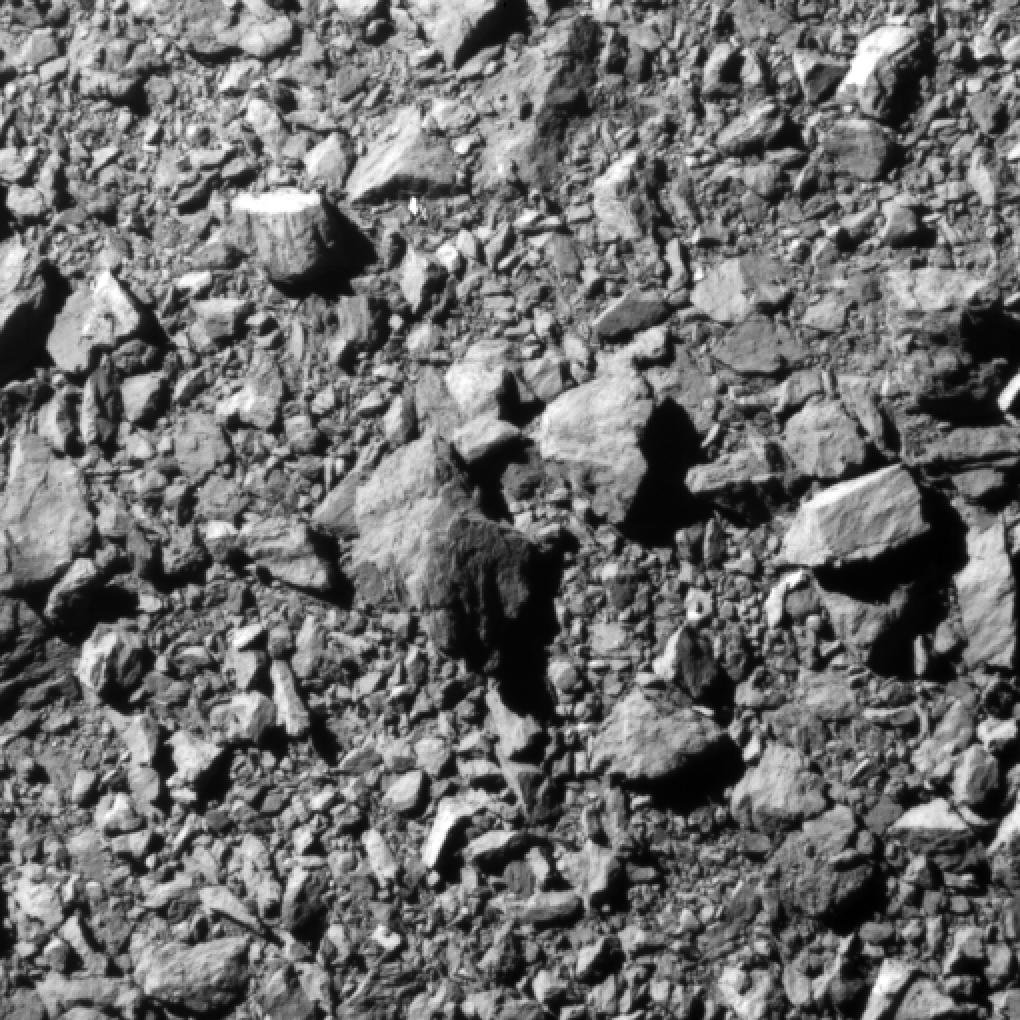
NASA’s Double Asteroid Redirection Test (DART) mission probe slammed into a targeted Near Earth Object, the asteroid Dimorphos, on Sept. 26 to demonstrate a kinetic impact strategy as a potential means of shielding the Earth from a disastrous collision with an asteroid or comet.
Contact occurred as predicted at 7:14 p.m. EDT, as Dimorphos orbited its parent asteroid, Didymos, some 6.8 million mi. from Earth. Neither of the objects posed a threat of impact with the Earth, NASA stressed.
Ground-based observatories on all seven of the Earth’s continents as well as the Hubble Space Telescope and James Webb Space Telescope will be watching in the coming weeks to assess how much the DART strike changed the 11-hr. 55-min. orbital period of the estimated 530-ft.-wide (160 m) Dimorphos around the 2,560-ft.-wide (780 m) Didymos. The change will represent a measure of whether a “kinetic impact” capability belongs in the Earth’s future planetary defense arsenal.
Pre-mission predictions were that the Dimorphos orbital period will be slowed by between 73 sec. and 10 min. The Didymos pair orbit the Sun every 770 days in an elliptical orbit that extends just beyond Mars to just outside the orbit of the Earth. DART, about the size of a golf cart and with a mass of 1,260 lb., struck its target at a velocity of more than 14,000 mph and within 55.8 ft. of the center of Dimorphos.
“We are showing that planetary defense is a global endeavor, and it is very possible to save our planet,” NASA Administrator Bill Nelson said moments after the strike.
The $330 million mission was launched on Nov. 24, 2021, from Vandenberg Space Force Base, California, to begin a 470 million mi. journey leading to the historic, first-ever asteroid strike.
The spacecraft was developed for NASA by the Johns Hopkins University Applied Physics Laboratory (APL), whose experts equipped the probe with the Didymos Reconnaissance and Asteroid Camera for Optical navigation (DRACO) and the Small-body Maneuvering Autonomous Real time Navigation (SMART Nav) algorithms leveraged from missile guidance technologies order to direct DART toward its target. Roll-Out Solar Arrays and APL-developed Transformational Solar Array concentrators generated the spacecraft’s solar power. Xenon-fueled ion thrusters developed by NASA's Glenn Research Center and Aerojet Rocketdyne provided an experimental propulsion system to evaluate for future missions. Aerojet Rocketdyne also furnished the primary propulsion system, a dozen hydrazine thrusters.
Didymos and Dimorphos, discovered in 1996, were selected for the mission so that the DART strike would not shatter Dimorphos on impact but rather allow its course to be altered in relation to Didymos so that the force of the strike could be best assessed through imagery of the target as well as how the motion and gravitational relationship between the two objects changes over time, according to Andy Rivkin, the APL’s DART mission co-investigation team lead.
“When we measure the change in the binary period of Dimorphos, we will understand how the asteroid reacted to our kinetic impact,” explained NASA’s Tom Statler, the DART mission program scientist. “Then we get a deeper understanding of what the geology of the asteroid was. That is the basic information that will help us refine our physical understanding of asteroids and our ability to compute and predict and extend this knowledge to really have a good plan to how we might react if we ever do discover a dangerous asteroid that is different from Dimorphos.”
The terminal phase of the mission began about four hours before impact, when all ground commanding ceased.
It was then that the DRACO optics and SMART Nav technologies began to differentiate between Dimorphos and Didymos and guide DART to its smaller target.
About an hour prior to impact, DART’s instrumentation could visually differentiate between the two bodies for the first time, and at 6:56 p.m. EDT, DART’s SMART Nav enabled the spacecraft to precisely lock onto its target, prompting a round of cheers and applause from those in the APL mission control room.
At five minutes until impact and 1,100 mi. from its target, DART was on its own. At 2.5 min. from impact, all maneuvering by DART stopped as it sped toward Dimorphos at 14,000 mph to strike an estimated 17 m (56 ft.) off the object’s center. Dimorphos came into view in the home stretch as a greyish blob with large and small boulders strewn across its surface. And then, as expected, the imagery stream ceased at impact.
“We’re embarking on a new era of humankind, an era in which we potentially have the capability to protect ourselves from something like a dangerous hazardous asteroid impact,” proclaimed NASA’s Lori Glaze, director of NASA’s planetary science division. “What an amazing thing. We have never had that capability before.”
Imagery of the encounter was transmitted back to Earth through NASA’s Deep Space Network at a rate of about one image per second and a trip for each image of about 45 sec., including the data processing. NASA broadcast the final 75 min. of the action live over NASA TV and streamed imagery over www.nasa.gov/nasalive.
Late on Sept. 11, the Italian Space Agency’s LICIAcube small satellite separated from DART, following along at that point to independently image the Dimorphos strike from a safe distance with two cameras. Transmission of imagery of the impact site gathered about three minutes after the collision was stored aboard LICIAcube to be transmitted back to Earth in the coming days.
The European Space Agency’s Hera mission is to launch to Didymos and Dimorphos in October 2024 on a reconnaissance mission equipped to gather high-resolution visual, laser and radar imagery of Dimorphos for transmission back to Earth to help further investigate the outcome of the kinetic impact.






Comments